 Setting a siphon enema
Setting a siphon enema
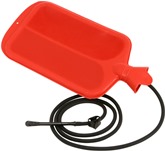 The setting of a siphon enema is carried out in order to most effectively free the intestines from feces, gases, decay and fermentation products. Siphon enema also helps in the diagnosis of intestinal obstruction.
The setting of a siphon enema is carried out in order to most effectively free the intestines from feces, gases, decay and fermentation products. Siphon enema also helps in the diagnosis of intestinal obstruction.
Indications for the procedure:
- Lack of proper effect from setting a cleansing enema .
- Removal of toxins, fecal, mucous, purulent contents from the intestinal cavity.
- Conditions accompanied by excessive processes of fermentation and putrefaction in the intestines.
- Severe flatulence.
- Preparation for surgical intervention on the intestines.
- Suspicion of intestinal obstruction.
 Emergency notification of infectious disease
Emergency notification of infectious disease
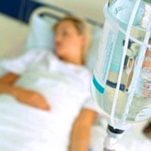
To prevent the spread of infections, according to the Order of the USSR Ministry of Health dated 04.10.80 N 1030, there is an “Emergency notification of an infectious disease” - an operational accounting document. Official registration form No. 058 / y, full name - "Emergency notification of an infectious disease, food, acute occupational poisoning, unusual reaction to vaccination."
Each case of an infectious disease or suspicion of it, pediculosis, poisoning or an unusual reaction to a vaccination must be transferred to the sanitary and epidemiological surveillance authorities. A notification is submitted no later than 2 hours after the discovery of the case. The sooner the notification is given, the easier it will be to take measures to prevent the spread of infection.
 Gastric lavage technique
Gastric lavage technique
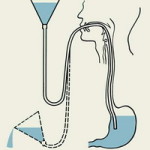
Gastric lavage is carried out both for therapeutic and diagnostic purposes. This probe procedure is based on the principle of communicating vessels and serves to pump out the contents from the stomach. The technique of gastric lavage requires concentration, knowledge of anatomy and physiology, and skills in manipulating the phantom from the nurse.
Indications for gastric lavage
- Poisoning by ingested poisons, alcohol, drugs, other toxic agents.
- Food poisoning.
- Gastric pathologies, including gastritis, with abundant mucus formation.
- Diagnosis of oncological diseases of the gastrointestinal tract.
- Identification of the pathogen in inflammatory processes in the stomach, as well as in the lungs and bronchi, when the patient cannot collect sputum.
 Vital capacity measurement
Vital capacity measurement
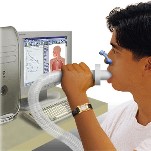
In order to assess the functional state of the respiratory system, the vital capacity of the lungs is measured using a special device - a spirograph.
Vital capacity (VC) is a value equal to the volume of air that the patient can exhale after taking the deepest possible breath. VC characterizes the state of the external respiration apparatus, allows you to assess the physical development of children and adolescents, to diagnose various diseases.
The procedure for determining the vital capacity of the lungs is called spirography . Manipulation requires the nurse to have knowledge about the device and the principles of operation of the apparatus, as well as the skills of examining patients.
 Classification of bone fractures
Classification of bone fractures
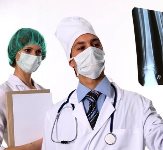
A bone fracture is a partial or complete violation of their anatomical integrity, accompanied by damage to surrounding tissues and impaired function of the injured segment.
The modern classification of bone fractures is diverse and is based on many factors.
Determining the type of fracture plays an important role in how correctly first aid will be provided, especially at the prehospital stage.
 Suture removal technique
Suture removal technique
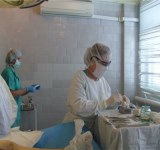
To fix and hold the edges of the wound in surgery, suturing is used. After 5-7 days, the skin sutures must be removed, that is, the suture material must be removed. This manipulation is carried out according to the doctor's prescription and under his control. The technique for removing sutures is not particularly difficult, but requires the nurse to be attentive, dexterous and follow all the rules of asepsis and antisepsis.
 Wound classification
Wound classification
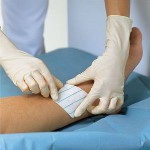
A wound is a mechanical damage (defect) of the skin, mucous membranes, underlying tissues and internal organs that occurs due to external influences. The modern classification of wounds is carried out according to several factors, which we will analyze below. The classic signs of an immediate establishment of the presence of a wound, in addition to damage to the skin and mucous membranes:
- pain;
- bleeding;
- hiatus.
 Applying a cold compress
Applying a cold compress

The setting of a cold compress or lotion is used to reduce pain, to prevent the spread of hematomas and to reduce body temperature during fever.
Indications for cold compresses:
- the first hours after bruises and other injuries;
- nose bleed;
- second period of fever;
- inflammatory processes in the mammary glands;
- acute inflammatory processes in the mammary glands;
- hematomas.
Contraindications
- Diabetes.
- Skin diseases.
- Cold intolerance.
- Chills (it is necessary to wait until the patient is completely warm).
The setting of cold compresses and lotions is carried out according to the doctor's prescription. Unlike warm compresses, cold compresses do not close.
 Applying a warm compress
Applying a warm compress
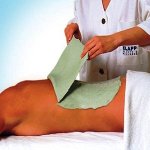
For local inflammatory processes, warming and hot compresses . The purpose of the procedure is to achieve an analgesic and resolving effect. The setting of a warm compress and a hot compress is carried out as directed by a doctor.
Indications for the use of hot and warm compresses are:
- local inflammatory processes in the skin and subcutaneous fat, in the joints;
- inflammation of the middle ear (otitis media);
- bruises a day after injuries;
- myositis;
- post-injection infiltrates.
Contraindications:
- high fever;
- acute inflammatory processes in the body;
- purulent and allergic skin diseases;
- violations of the integrity of the skin;
- you can not apply a compress to the area of skin treated with iodine in order to avoid deep burns.
 Throat and nose swab
Throat and nose swab
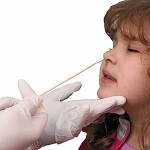 One of the important skills of a nurse is the ability to take a swab from the throat and nose for bacteriological studies.
One of the important skills of a nurse is the ability to take a swab from the throat and nose for bacteriological studies.
The purpose of taking swabs from the throat and nose : to identify the causative agent of the disease, bacterial carrier, and also to determine sensitivity to antibiotics.
contraindications to the procedure.
 Chief Nurse Documentation
Chief Nurse Documentation
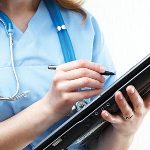
All documentation of the head nurse consists of several large sections.
I. Regulatory framework.
II. Branch passport.
III. Pharmacy documentation.
IV. Materials on the activities of nursing staff in the department.
V. Folders and magazines on various aspects of the work of a senior nurse.
Let's take a look at the sections in more detail.
 Caring for patients with hypertension
Caring for patients with hypertension
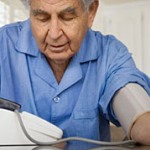
In order to properly care for patients with hypertension and to plan the nursing process in a timely and competent manner, we will analyze the definition of the disease itself. So, hypertension is a disease accompanied by such a pathological condition as hypertension or hypertension.
Arterial hypertension or hypertension is an increase in blood pressure, which is caused by non-natural reactions of the body to certain physiological situations (stress, heat, somatic disease). With arterial hypertension, there is an imbalance in the systems responsible for maintaining blood pressure within the normal range.
 Humor for the Day of the Medical Worker
Humor for the Day of the Medical Worker

Dear colleagues, the site administration usually tries to provide information, so to speak, unique. That is, word for word on other sites and in primary sources is not found.
However, today we offer you jokes about doctors borrowed from another site, that is, from several at once. Unfortunately, the author was nowhere to be seen, although he has great respect, as they say now. 🙂 So, humor for the day of the doctor:
Comic classification of doctors
 Medical Worker's Day 2014
Medical Worker's Day 2014
 Nurses, like all doctors, will celebrate the day of the medical worker 2014 on June 15th. This professional holiday has been celebrated in the Soviet Union since 1966. And now it is celebrated by the inhabitants of Russia, as well as some former Soviet republics.
Nurses, like all doctors, will celebrate the day of the medical worker 2014 on June 15th. This professional holiday has been celebrated in the Soviet Union since 1966. And now it is celebrated by the inhabitants of Russia, as well as some former Soviet republics.
 Transport immobilization for hip fracture
Transport immobilization for hip fracture
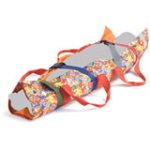 Before we go into detailed instructions, let's recall the basic concepts of this topic.
Before we go into detailed instructions, let's recall the basic concepts of this topic.
Immobilization is the creation of immobility of a damaged (injured) part of the body.
Transport immobilization is a temporary measure, immobilization during the delivery of the victim to a medical institution.
Proper transport immobilization for a hip fracture is essential for the further outcome of this severe injury. Recall that fractures of the femur are divided mainly into 2 types: Read more "
 Emergency care for pulmonary edema
Emergency care for pulmonary edema
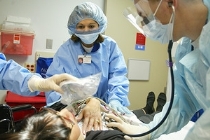
Let's analyze what emergency care for pulmonary edema is required from a nurse. But first, let's refresh our knowledge about pulmonary edema, the causes and mechanism of occurrence, the clinical picture.
Pulmonary edema is a severe, life-threatening pathological condition in which fluid leaks from the blood and lymphatic vessels into the alveoli. This condition is the result of stagnation in the pulmonary circulation, which can be caused by the following reasons:
 Nurse's Day 2014
Nurse's Day 2014
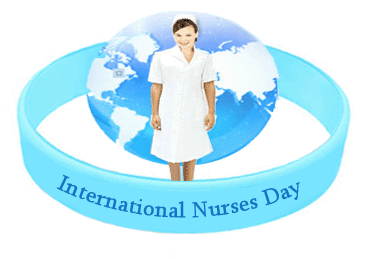
On the day of the nurse in 2014 - it will be May 12 , as in 2013 , and every year, since 1971, I would like to congratulate colleagues. We owe the day of the nurse to the founder of our profession - Florence Nightingale . It is on her birthday that we celebrate our nursing professional holiday.
Let your patients be grateful to you for your deep knowledge and professionalism, the highest responsibility, the ability to come to the rescue in time, warmth and sincerity. May your work bring you satisfaction and a sense of pride in your work, a sense of belonging to a contribution to a great and extremely important cause - the preservation of people's health.
 nursing pedagogy
nursing pedagogy
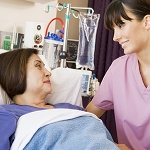
The functions of a nurse are currently being expanded due to health care reforms. At the same time, one of the most important components of professional activity is nursing pedagogy - the transfer to the patient and his relatives of the necessary knowledge, skills and abilities.
The effectiveness of the nursing process directly depends on the literacy and professionalism of the nurse. When a patient loses the ability to self-care, a nurse comes to the rescue. But not only to help carry out the necessary actions. A much more important task of the nurse is to teach the patient to serve himself under the prevailing conditions.
 Help for myocardial infarction
Help for myocardial infarction
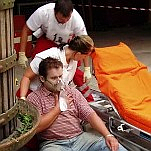
Myocardial infarction is a necrosis of a section of the heart muscle that develops as a result of an acute violation of the blood supply to the myocardium and is one of the complicated forms of coronary heart disease. Emergency care for myocardial infarction largely determines the prognosis of the disease. The faster and better the assistance provided at the prehospital stage, the more favorable the outcome of the disease.
 Attestation report of a nurse
Attestation report of a nurse

Once every 5 years, paramedical workers undergo certification to assign or confirm their qualification category. To pass this procedure, a certification report of a nurse for the last year of practical activity at the main place of work is required. For specialists with higher education, the report should reflect the activities for the last 3 years.
The report of a specialist applying for the assignment or confirmation of a qualification category is a work reflecting a comparative analysis of the work activity of a medical worker over the past year.
 Chief Nurse Annual Report
Chief Nurse Annual Report
The obligatory annual report of the head nurse is drawn up in accordance with the plan for the past (reporting) year. The head nurse draws up a report on the work done for the year by sections of the plan.
The first paragraph of the report is often a message about the personnel of the department:
- what rates were available at the beginning of the year, their number;
- how many of these rates were occupied, how many were free;
- number of employees of junior and middle personnel by positions;
- change of personnel for the year: how many individuals were hired, how many quit;
- staffing changes: how many and what rates were cut or opened.
 Algorithm for measuring body weight
Algorithm for measuring body weight
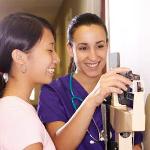
Let us analyze the algorithm for measuring body weight as one of the mandatory manipulations that a nurse of any profile should own. Body weight is determined for diagnostic purposes to assess physical development and evaluate dynamic changes in the patient's condition.
Indications for determining body weight:
- monitoring the physical development of a child, adolescent or adult;
- detection of deficiency or excess of weight;
- detection of hidden edema;
- observation of the dynamics of weight in the course of treatment of the cardiovascular, genitourinary, endocrine systems;
- admission of the patient to the hospital;
- doctor's appointment.
 Height Measurement Algorithm
Height Measurement Algorithm
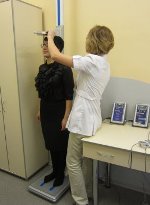
Consider the algorithm for measuring human height as one of the basic skills that a nurse should have. Height measurement is one of the measuring methods of anthropometry. The purpose of this process - diagnostic - is to assess the physical development or dynamics of the patient's condition.
Indications for measuring height:
- control over the physical development of the patient (child, adolescent, adult);
- endocrinological diseases (obesity, osteoporosis, impaired pituitary functions);
- admission of the patient to the hospital;
- doctor's appointment.
 Assistance in hypertensive crisis
Assistance in hypertensive crisis
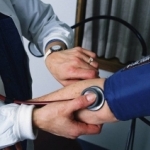
A hypertensive crisis is a condition that occurs as a result of a sharp sudden increase in blood pressure. This condition is urgent, therefore, the provision of assistance in a hypertensive crisis should occur quickly and clearly according to the algorithm.
At the same time, specific high numbers are not singled out. Changes in both the blood pressure indicators themselves and the patient's well-being are assessed individually in each case.
 Treatment with medical leeches
Treatment with medical leeches
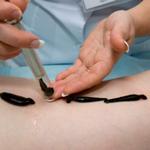
Currently, treatment with medical leeches (hirudotherapy) is used for hypertension, coronary heart disease, glaucoma, thrombophlebitis and vein thrombosis, hemorrhoids. As a goal from the use of leeches can be set:
- local bleeding;
- decrease in BCC (volume of circulating blood);
- decrease in blood clotting.
 Counting the number of breaths
Counting the number of breaths
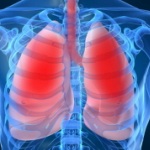
The functional state of the respiratory and cardiovascular systems will be determined by counting the number of respiratory movements in the patient. Indications for counting the frequency of respiratory movements are mainly diseases of the respiratory system and the cardiovascular system. Before considering the sequence of actions of this manipulation, let us recall what breathing is in general.
Breathing is the main life process that provides a continuous supply of oxygen to the body and the release of carbon dioxide and water vapor from the body. There are the following types of breathing in humans, depending on the involvement of the chest in the process.
 Canning technique
Canning technique
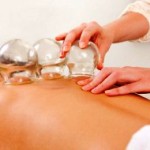 The therapeutic effect of medical cups is based on increased blood and lymph circulation in organs and tissues. The purpose of the procedure is the resorption of inflammatory processes, as well as the reduction of muscle pain.
The therapeutic effect of medical cups is based on increased blood and lymph circulation in organs and tissues. The purpose of the procedure is the resorption of inflammatory processes, as well as the reduction of muscle pain.
The technique of setting cans requires a certain skill, composure and caution.
Indications for setting medical jars:
- diseases of the upper respiratory tract;
- neuralgia, myositis;
- inflammatory diseases of the nerve trunks;
- congestion in the chest organs.
 Technique for setting mustard plasters
Technique for setting mustard plasters
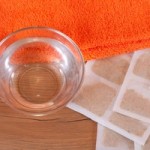
The use of mustard plasters is based on the therapeutic effect of mustard oil, which is part of the mustard, which is released from it at a temperature of 39 to 45 degrees.
The main effect of the procedure is to increase blood circulation, the goal is the resorption of inflammatory processes, pain relief.
The technique of setting mustard plasters is not difficult in practice, however, it is necessary to follow the existing rules and sequence of actions.
 Heating pad technique
Heating pad technique
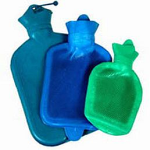
The use of a heating pad is based on its therapeutic effect, which consists in reflex relaxation of smooth muscles and increased blood supply to organs and tissues.
The ultimate goal of this procedure is to achieve analgesic and relaxing effects.
The technique of applying the heating pad must be carried out clearly and consistently in order to avoid complications. The procedure is performed strictly according to the doctor's prescription.
 Ice Pack Technique
Ice Pack Technique
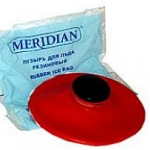
The use of an ice pack is carried out in the following pathological conditions:
- external and internal bleeding;
- acute inflammatory processes of the abdominal cavity;
- the first day after bruises;
- postpartum period;
- condition after an abortion;
- fever;
- insect bites;
- heatstroke.
The technique of using an ice pack is not complicated, but requires knowledge of the sequence and correctness of the nurse's actions. The action of the ice pack is based on:
- narrowing of blood vessels of deeply located organs and tissues;
- decreased receptor sensitivity.
 Diet number 15
Diet number 15
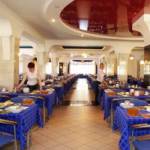
Diet number 15 is used for various diseases that do not require the appointment of a special therapeutic diet in the normal state of the gastrointestinal tract. Table 15 is transitional to everyday home nutrition during the patient's recovery period, as well as after following another therapeutic diet.
The purpose of the diet is to provide nutrition to the patient according to physiological norms in a hospital setting.
 Diet number 14
Diet number 14
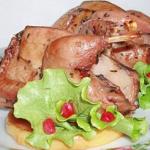
Diet number 14 is prescribed for urolithiasis with an alkaline urine reaction and precipitation of phosphorus-calcium salts (phosphaturia) in the urine.
The purpose of the appointment is to help restore the acidic reaction of the urine and, thus, to prevent the formation of sediment in the urine.
Diet number 14 is characterized by the restriction or exclusion of alkalizing foods. Included in the diet are those foods and dishes from them that contribute to a change in the reaction of urine to the acid side. In the absence of contraindications, the patient is recommended to drink plenty of fluids.
 Diet number 13
Diet number 13
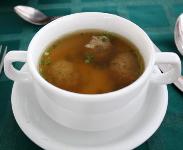
Diet number 13 is prescribed for acute febrile conditions accompanying infectious diseases, tonsillitis, conditions after operations. Purpose of Table No. 13 Appointment:
- maintaining and increasing the resistance (protective forces) of the body;
- decrease in intoxication;
- sparing the digestive system in bed rest and feverish conditions.
 Diet number 12
Diet number 12
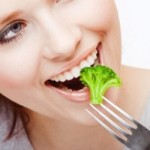
Diet number 12 is prescribed for functional conditions and diseases of the central nervous system, accompanied by increased excitability of the patient. The purpose of the appointment of table number 12 is to reduce the load on the work of the central nervous system. Restriction of table salt - up to 6 grams per day.
The composition of diet number 12:
- proteins - 80-90 grams (55-60% - animals);
- fats - 70 grams (30% - vegetable);
- carbohydrates - 350 grams.
Energy value - 2300-240 kcal.
 Diet number 11
Diet number 11
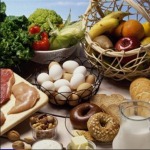
Diet number 11 is prescribed for the following diseases and conditions:
- tuberculosis of the lungs, lymph nodes, bones, joints - in the stage of a mild exacerbation or attenuation of the process, in the absence of concomitant diseases of the internal organs;
- reduced body weight after surgery, infections.
The purpose of the appointment of table No. 11 is to increase the body's resistance (defenses), enhance overall nutrition, restore vitamin balance, and enhance recovery processes in the affected organ.
 Diet 10c
Diet 10c
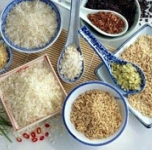
The 10c diet is indicated for atherosclerosis, which mainly affects the vessels of the brain, heart and other internal organs. Also showing are:
- myocardial infarction in the stage of scarring;
- IHD and hypertension due to the presence of atherosclerosis.
Purpose of Table No. 10 appointment with:
- reduction of manifestations of metabolic disorders;
- slowing down the development of atherosclerosis;
- improvement of blood circulation processes; Read more "
 Diet 10a
Diet 10a
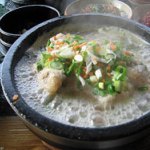
Diet 10a is indicated for diseases of the cardiovascular system, accompanied by severe circulatory failure (II-III degree), myocardial infarction in the acute and subacute periods.
The purpose of the appointment of table number 10a:
- improvement of the activity of the cardiovascular system;
- increased blood circulation;
- sparing the digestive system, kidneys, liver;
- reduction of edema;
- normalization of metabolism.
- Read more "
 Diet number 10
Diet number 10
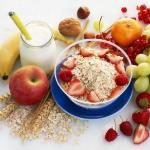
Diet number 10 is indicated for diseases:
1. Cardiovascular system:
- rheumatic heart defects in the stage of compensation or with circulatory failure of the 1st degree;
- hypertension I and II stages;
2. diseases of the nervous system, accompanied by irritability, a tendency to excitability;
3. kidney diseases:
- chronic nephritis and pyelonephritis with changes in indicators in the urine sediment;
- acute and chronic pyelitis.
 Nurse's Day 2013
Nurse's Day 2013
Nurse's Day 2013  is coming soon . Like every year - May 12 , the day when the founder of nursing was born - the legendary Florence Nightingale . This holiday is international, celebrated by all communities of nurses, in all teams and finds a spiritual response in the soul of every nurse.
is coming soon . Like every year - May 12 , the day when the founder of nursing was born - the legendary Florence Nightingale . This holiday is international, celebrated by all communities of nurses, in all teams and finds a spiritual response in the soul of every nurse.
Our holiday officially came to Russia in 1993. So on the day of the nurse in 2013, we can mark the 20th anniversary of the inclusion of Russian sisters in the global celebration. We are very pleased and proud of the fact that on this day we congratulate the sister-sister, the paramedic and the midwife. Those without whose hands doctors simply can not do. And first of all, she takes care of the patients - a nurse, a paramedic, a midwife.
 Diet number 9
Diet number 9
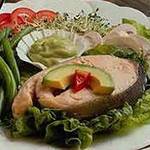
Diet number 9 is prescribed for diabetes, but only if there is no acidosis and diseases of the internal organs.
Purpose of Table No. 9 :
- creating conditions in the body to maintain a positive carbohydrate balance;
- prevention of lipid metabolism disorders.
 Diet number 8
Diet number 8
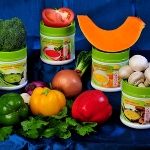
Diet number 8 is indicated for obesity with the absence of concomitant diseases of the digestive and cardiovascular systems. This is due to the fact that these diseases require a certain diet, prescribed individually.
The purpose of the 8th table : enhancing metabolism, in particular lipid metabolism and water and electrolyte balance, in order to eliminate excess body fat in the patient.
 Diet number 7
Diet number 7
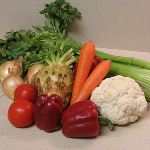
Diet number 7 is shown:
- with acute nephritis at the stage of recovery;
- chronic nephritis with mild changes in the composition of the urine sediment;
- nephropathy of pregnant women;
- hypertension;
- in cases where a salt-free diet is necessary.
The purpose of the appointment of the seventh table is to create moderately gentle conditions for the work of the kidneys. At the same time, the restriction in the diet of table salt helps to reduce hypertension and reduce edema.
 Diet number 6
Diet number 6
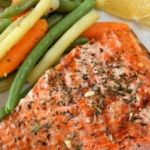
Diet number 6 is prescribed for uric acid diathesis and gout, erythremia, and in cases where meat and fish products should be excluded from the diet. The purpose of the appointment of the 6th table is to normalize purine metabolism, as well as reduce the formation of uric acid in the body.
With the physiological norm of proteins, refractory fats and products rich in purine compounds are excluded. Table salt is limited. Introduced into the diet are those foods that contain alkaline radicals. Overweight patients are restricted from carbohydrates.
 Diet number 5
Diet number 5
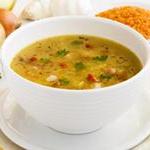
Therapeutic diet number 5 is indicated for chronic diseases of the liver and biliary tract - hepatitis, cholecystitis, cirrhosis of the liver without the acute stage in the absence of concomitant diseases of the stomach and intestines.
The purpose of table number 5 is to promote the restoration of impaired liver function by the following effects:
- accumulation of glycogen in the liver;
- normalization of liver fat metabolism by limiting dietary fats, mainly refractory ones, as well as the introduction of lipotropic substances and vitamins;
- reducing the intoxication effect on the liver by regulating bowel function;
- stimulation of bile secretion;
- exclusion of foods that irritate the liver.
 Diet number 4
Diet number 4
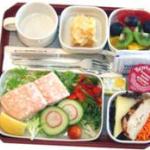
Therapeutic diet number 4 is prescribed for gastroenterocolitis, colitis - acute and chronic in the acute stage, dysentery in the acute period, as well as for conditions after operations on the intestines.
The purpose of table number 4 is to maximize the sparing of the intestine - both mechanical and chemical, to minimize peristalsis and fermentation processes. Significantly reduce the consumption of fats and carbohydrates, proteins are given within the lower limits of physiological needs. Energy value - about 2000 kcal per day.
